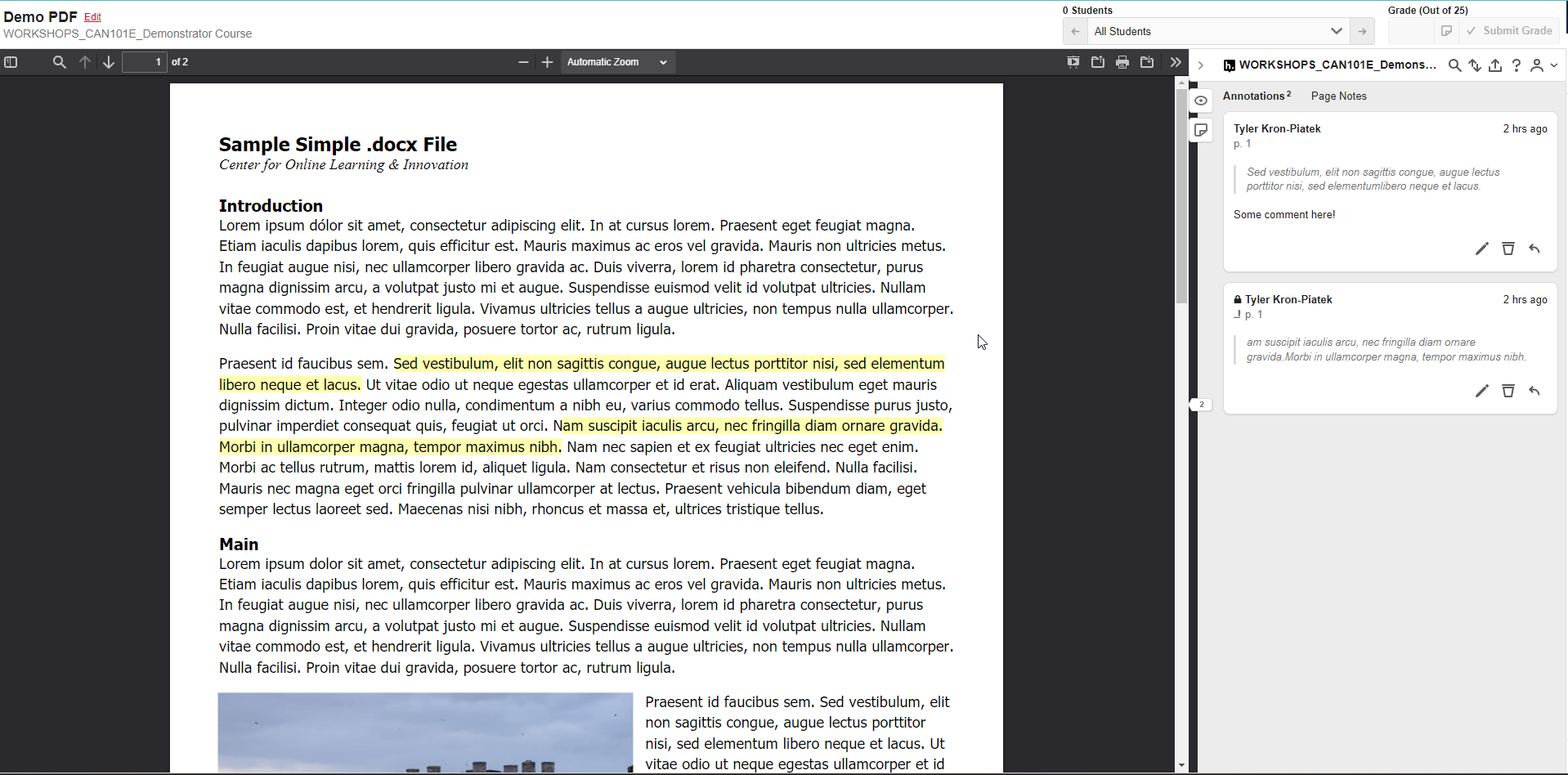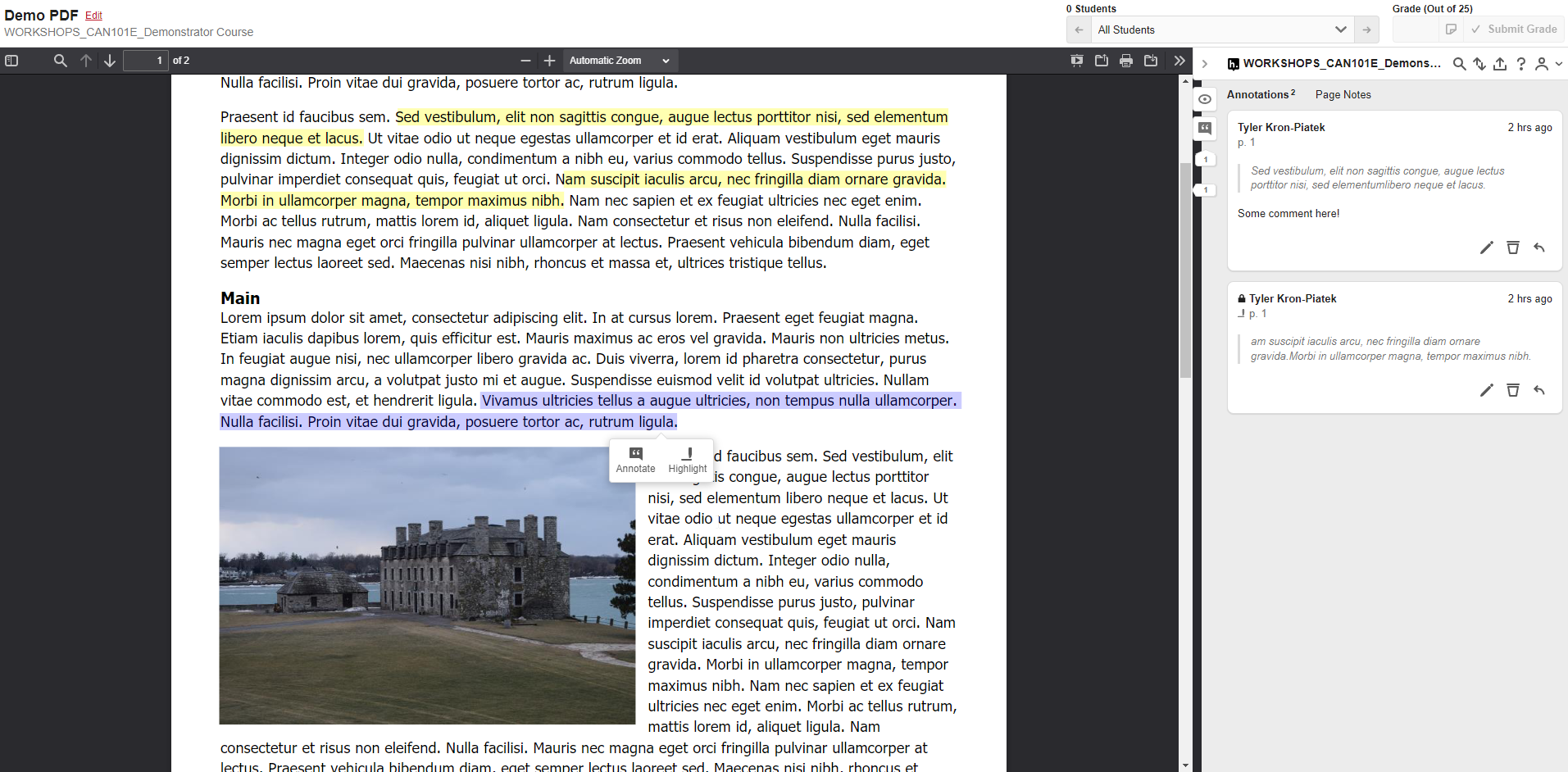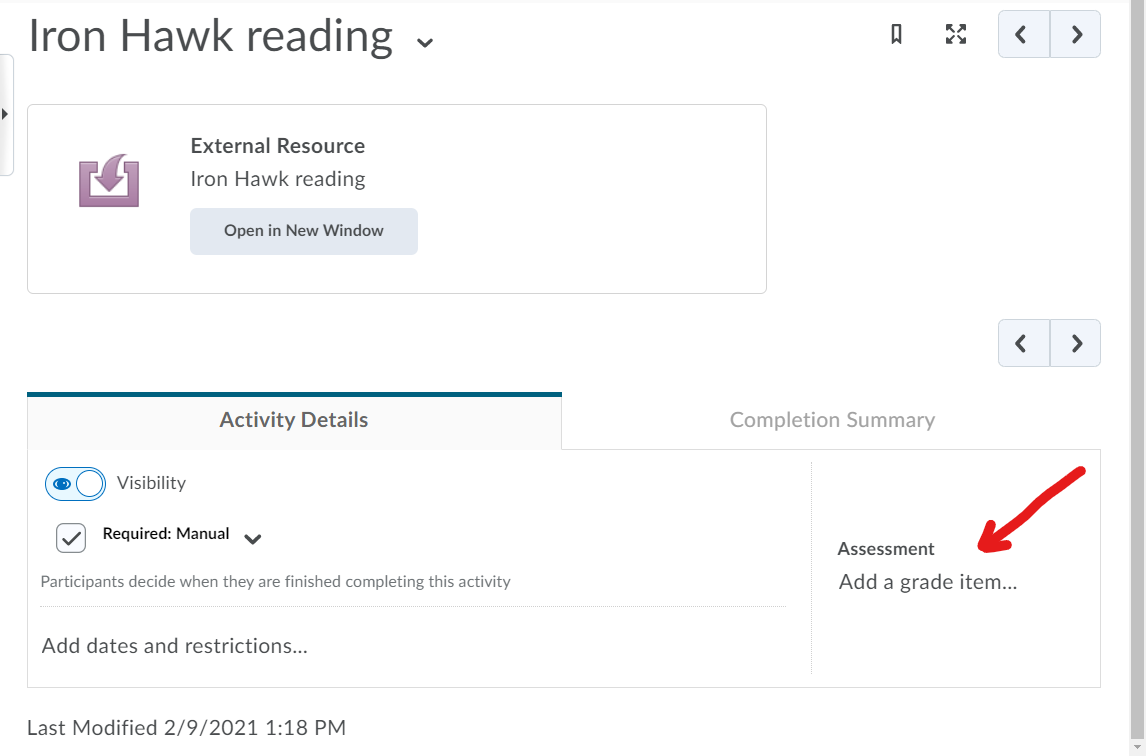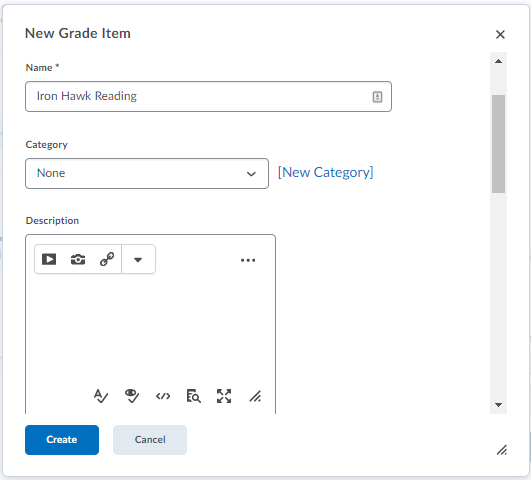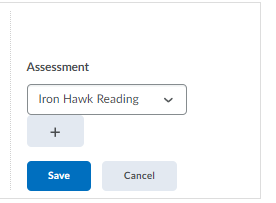Hypothes.is
For a professor, Hypothes.is operates in D2L and their Google Drive, the latter hosting any files shared with students.
With hypothesis, you will choose the file you want students to read after you create an External Learning Tools link to Hypothes.is. You create such a link (also referred to as LTI or Learning Tools Interoperability) for every individual text you assign your students to discuss.
You can create a hypothes.is account outside D2L, but you do not need to, and one is created for you automatically if you only operate through D2L. This is the same for your students, too.
Table of Contents
Using Hypothes.is For the First Time (and Installing an Assignment.)
Based on the Hypothes.is: Using PDFs in D2L video (Transcript available).
| 1 | Create a Module in the D2L Course Content area. This will hold all of the PDF's you plan on using for Hypothes.is. In the example, we chose to name the module "PDF's for Hypothes.is". Note: DO NOT hide this folder nor the PDF's or otherwise restrict the folder/PDF's (i.e., with Start Dates and/or End Dates). If you do, the Hypothes.is link will not work for your students. | |
| 2 | Upload the PDF's that you are planning on using (more PDF's can be added later). Go to New>File Upload. You can either drag and drop them to where it says "Drag and drop files here to create and update topics" or go to New>Upload Files and follow the on-screen prompts. | |
| 3 | Create a Hypothes.is Assignment in another module by clicking on Add Existing Activities and selecting Hypothes.is Reading. | |
| 4 | In the menu that appears, click on D2L. | |
| 5 | In the pop-up that appears, click on the module that is holding your PDF's. Then click on Select. | |
| 6 | Click on the PDF that you want to use. Then click on Select. | |
| 7 | The page will update and you will see the Assignment details screen. We can quickly change out the PDF if we chose the wrong one, change the Title of the assignment, and turn the assignment into a Group Assignment. Clicking on Continue will add the Hypothes.is assignment to the bottom of the Module. | |
| 8 | Click on the assignment. Make sure that the article is the right one and that it is properly OCR'd (Optical Text Recognition). If it is not the right article, look at Edit a Hypothes.is Assignment. If it is not properly OCR'd (meaning that you are having a hard time highlighting text and/or the annotation on the right is not correct), take a look at Hypothes.is's instructions at the following link: https://web.hypothes.is/help/how-to-ocr-optimize-pdfs/ | |
| 9 | On the left, you will have your assignment. On the right, any and all available annotations. | |
| 10 | To annotate, click and drag your cursor on some text. Then, choose Annotate. You may also simply highlight the selection. | |
| 11 | When you select annotate, your comment will appear on the right sidebar. You can type in your comment, add pictures, and more using the available text editor. You can also select who can see your comment by selecting the drop down arrow to the right of "Post to...". By default, all comments are public. |
OCR
In order for PDFs to allow line-by-line, word-by-word highlighting in D2L, they require Optical Character Recognition (OCR) data. Many PDFs have this already, but those scanned using a campus printer/scanner might require it. Adobe Acrobat will work for this; as will Hypothes.is's own scanning tool: https://web.hypothes.is/help/how-to-ocr-optimize-pdfs/
Scoring
D2L will integrate scoring with Hypothes.is, such that a grade can be sent from Hypothes.is to D2L's gradebook.
On the Hypothes.is Content Topic's management screen, click Add a grade item... Click the + button. | |
Enter a name and points value in the dialog box. This will create your gradebook item or entry. | |
| This click the blue Save button at the bottom of the screen. |
Other Tutorials
- Hypothes.is: Auto-Grading Assignments
- Hypothes.is: Create Group Assignments
- Hypothes.is: Edit an Assignment
- Hypothes.is: Export Comments
- Hypothes.is: Use JSTOR for Hypothes.is Assignments
- Hypothes.is: Use PDF's uploaded to Google Drive
- Hypothes.is: Use YouTube in Hypothes.is Assignments
- Hypothes.is Troubleshooting









